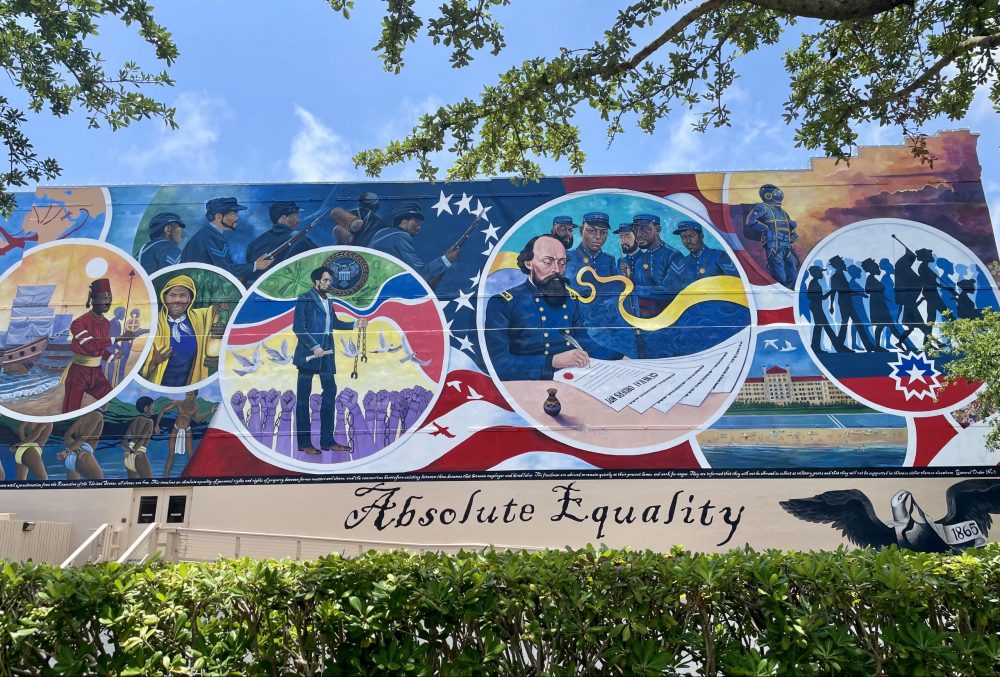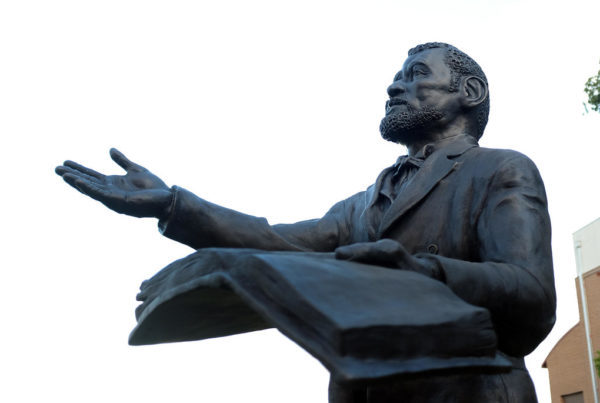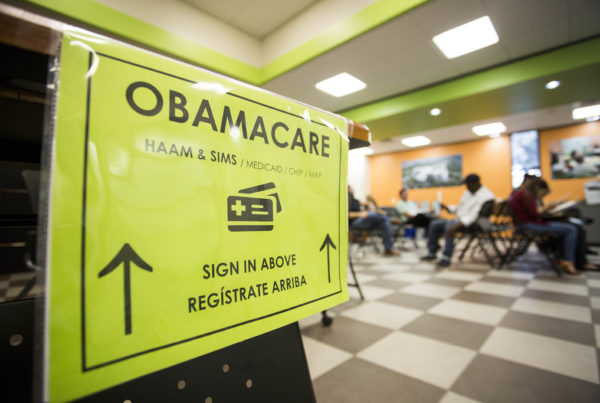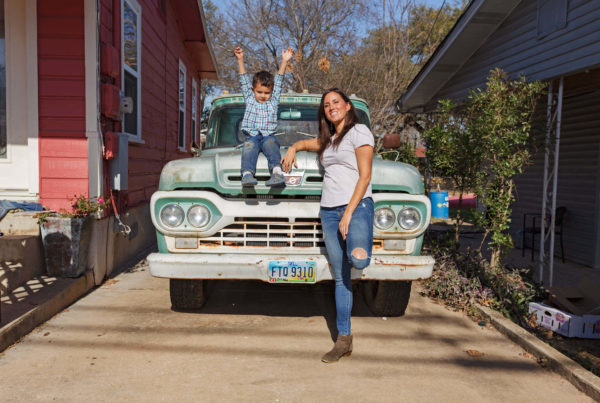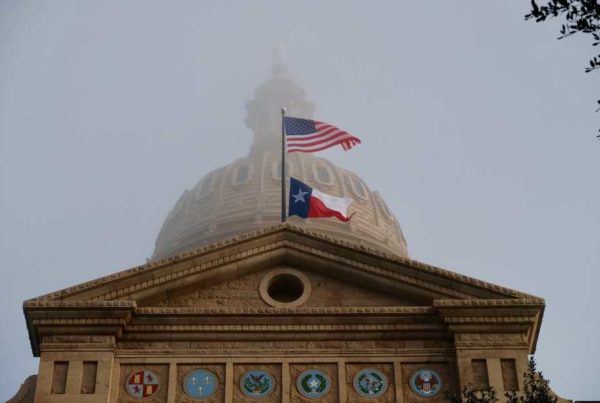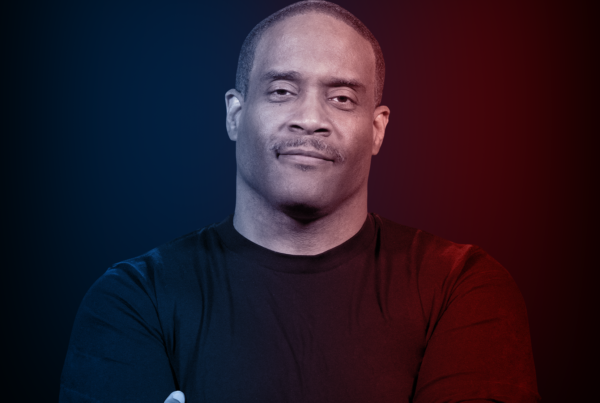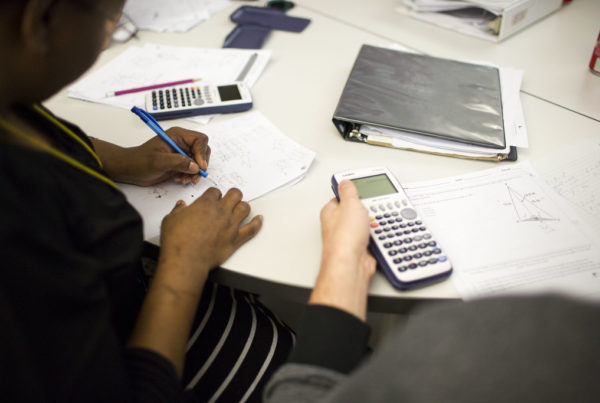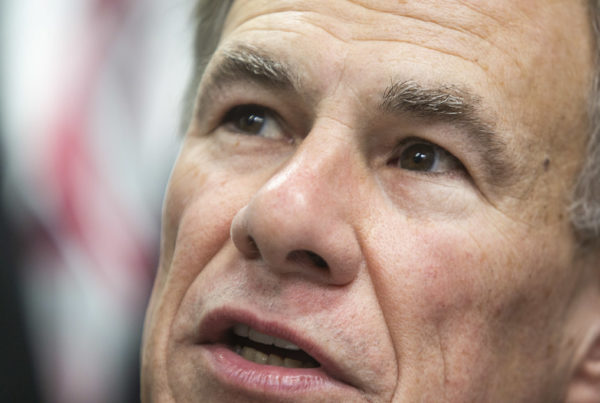June 19, otherwise known as Juneteenth, commemorates the date some of the last enslaved people in the Confederacy became free — two-and-a-half years after President Lincoln signed the Emancipation Proclamation.
For Juneteenth Legacy Project co-founder Samuel Collins III, it’s a part of his history. And now he says he wants to teach others the true story behind that historic day.
Collins was born and raised in Galveston County growing up in Hitchcock after his parents divorced, and spending weekends and summers on Galveston Island with his dad. His roots in Galveston go back nearly 100 years: his great grandparents arrived in 1925.
Houston Public Media interviewed Collins about the Juneteenth Legacy project, the mural he and his team put up in Galveston, and how he plans on achieving his goal of teaching others about that day.
RELATED | Galveston Unpacks Juneteenth History With New Downtown Mural
How long have you been waiting to put up a Juneteenth mural in Galveston?
After we placed the historical marker. I would often pass the intersection and notice that some people were reading the marker, but others were passing by, and this blank wall created an opportunity to tell a more complete story of Juneteenth and the journey of freedom here in Texas. There’s been a national conversation around the 1619 date, and I’ve pointed out to many individuals that Galveston’s history goes back to Esteban, who arrived shipwrecked here in 1528, so we’re coming up on the 500-year anniversary of the first non-native enslaved person to reach this area.
How do you feel now that the mural is up?
I am ecstatic. I’ve been giving private tours at our Juneteenth Legacy Project headquarters with individuals who have come down to see the mural. The mural represents the icing on the cake. There’s more in the cake inside, and individuals have been able to come inside and see the art exhibit and hear more of the story because behind the paint and the plaster are the bricks that were laid by the enslaved individuals for the building. The fingerprints of those enslaved individuals are in some of those bricks. So with this project, as we create this outdoor classroom, it is a beautiful, beautiful, covering to the cake — but it’s my job as a historian to slice this cake and dive deeper, and tell more of the story. So, we are extremely ecstatic that individuals are noticing the mural and that we’ve gotten national and international attention.
How did the idea for the mural “Absolute Equality” come about?
I saw this blank wall and I thought, “what an amazing space — what if we could put the story of the United States Colored Troops coming into Galveston with Granger, so it was all of them together?” For too long, they have not been included in the story, the USCT, and they were very much an integral part of the union victory at Appomattox in April 9, 1865, and then with bringing the message of freedom to Texas, to Galveston, and to the enslaved people and the enslavers to let them know that this is over. We know it was complicated and it wasn’t as smooth of a transition, so this “Absolute Equality,” we’re still on the march forward to achieve it. Not equal results for every individual, but create an environment where every individual has an equal opportunity to become the very best version of themselves. Therefore improving their family, neighborhood, city, county, state, nation, and hopefully the world.
What’s significant about the location of the mural?
You are at ground zero — the southwest corner of 22nd and Strand. It’s the location in which the union headquarters were set up, where the Osterman building was set up. So no other community has this sacred ground. Everyone can talk about Juneteenth, they can talk about the message of freedom, but they don’t have this location. When that building was torn down, it exposed the east façade of the old Galveston square building that is next door. That created this opportunity of this blank wall being available to paint a mural. So this is incredible synergy and energy to work with from this location.
To learn more about Juneteenth and what led to it, here is a partial reading list curated by Samuel Collins III.
South to Freedom, by Alice Baumgartner: While many think that the Underground Railroad only ran north from the American South, for a time period, it also ran down to Mexico. Baumgartner’s book shows that eslaved people were able to escape slaveholders once crossing the border, in this novel.
On Juneteenth, by Annette Gordon-Reed: Gordon-Reed is a Texas native, a Pulitzer Prize-winner, and a New York Times best-selling author. With this novel, she tells the story of Juneteenth’s importance to American history through personal anecdotes and facts.
Juneteenth: The Story Behind the Celebration, by Edward T. Cotham: Cotham’s work is the first scholarly book on Juneteenth.
Remembering Slavery: African Americans Talk About Their Personal Experiences of Slavery and Emancipation, edited by Ira Berlin and Steven F. Miller: Remembering Slavery tells the story of enslaved people from a first-person point of view, through excerpts from interviews conducted with former slaves during the Federal Writers’ Project.


